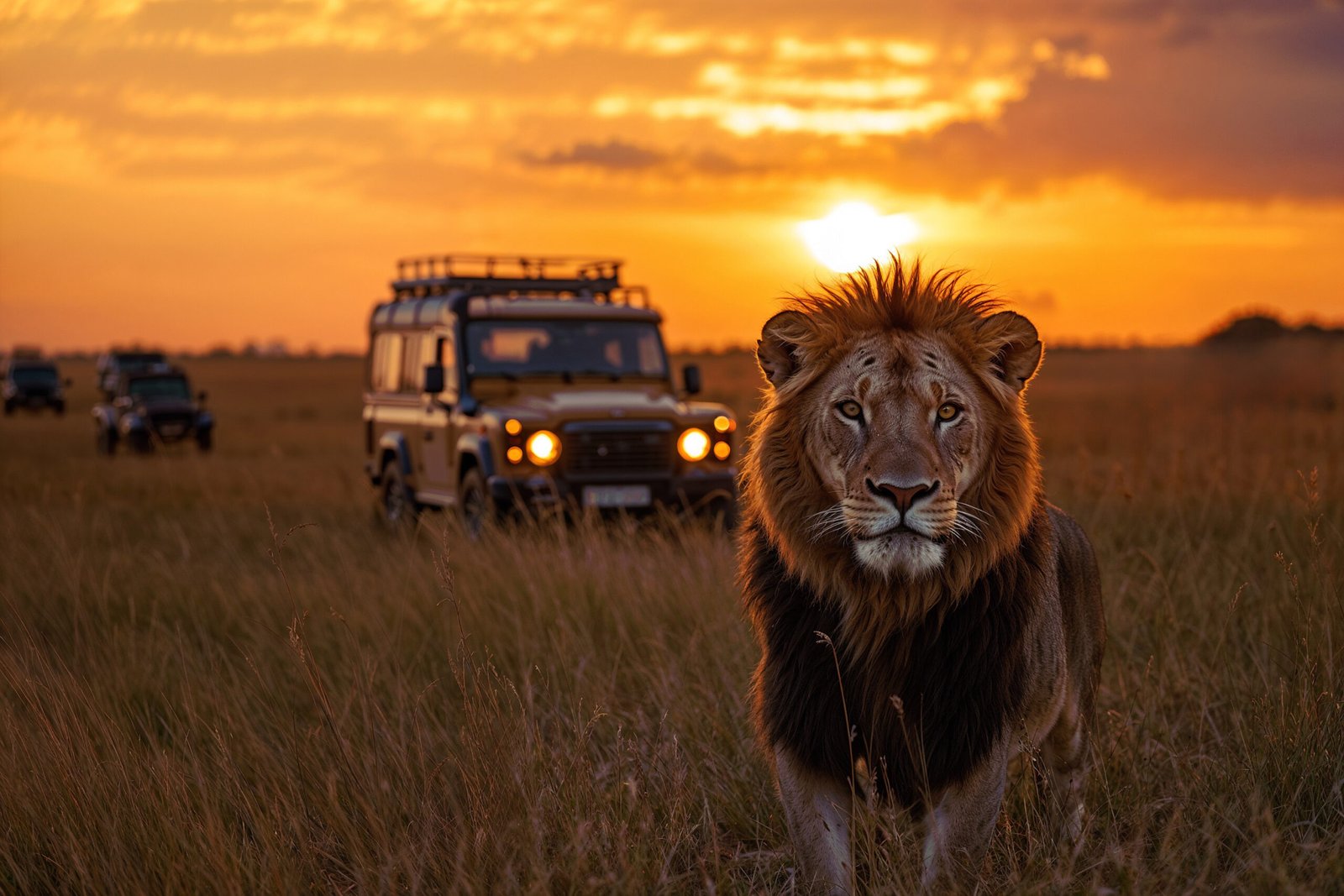Introduction
Tanzania is one of Africa’s most captivating safari destinations, home to vast savannahs, dramatic landscapes, and some of the richest wildlife experiences on the planet. From the endless plains of the Serengeti to the breathtaking Ngorongoro Crater, each season in Tanzania offers a unique spectacle. Whether you’re seeking the thrill of the Great Migration, birdwatching in lush wetlands, or spotting predators in dry, open terrain, understanding the safari seasons is key to planning your adventure. This guide will walk you through Tanzania’s climate patterns, highlight what to expect in each season, and help you decide when to embark on your unforgettable safari.
Understanding Tanzania’s Climate and Wildlife Patterns
Tanzania has two main seasons: the dry season and the wet season, each shaping the landscape and wildlife behavior in distinct ways. While the country enjoys warm temperatures year-round, the timing of rains influences everything from animal movements to road accessibility.
-
Dry Season (June to October): Characterized by sunny days, low humidity, and sparse vegetation, this is the most popular time for safaris. Wildlife gathers around water sources, making sightings easier.
-
Short Rains (November to December): A brief period of light showers that refresh the landscape without disrupting travel too much.
-
Long Rains (March to May): Heavy rainfall during these months can make some areas muddy and challenging to navigate, but it also means fewer tourists and lush scenery.
The Safari Seasons Explained
June to October – Prime Wildlife Viewing
This is considered the peak safari season in Tanzania. The grass is low, the skies are clear, and water sources become scarce—meaning animals congregate in predictable locations. This is also the time to witness parts of the Great Migration in the northern Serengeti, including dramatic river crossings.
November to February – Calving Season & Birding Paradise
From late January to February, the southern Serengeti becomes the stage for the calving season, when thousands of wildebeest give birth. This attracts predators like lions, cheetahs, and hyenas, offering thrilling predator-prey encounters. Birdwatchers also enjoy this period as migratory species arrive.
March to May – Green Season Tranquility
Although it’s the wettest period, the long rains bring the landscapes to life with vibrant greenery. Fewer visitors mean more intimate safari experiences, and photography lovers will find the lighting soft and dramatic. While some roads may be inaccessible, certain areas like the Ngorongoro Crater remain open year-round.
Planning Around the Great Migration
The Great Migration is one of nature’s most spectacular events, involving over a million wildebeest and thousands of zebras as they travel through the Serengeti ecosystem. Your timing determines which part of the migration you’ll witness:
-
December to March: Herds spread across the southern Serengeti for calving.
-
April to May: Animals begin moving northward.
-
June to July: The migration reaches the western corridor, with river crossings at the Grumeti River.
-
August to October: Northern Serengeti crossings over the Mara River occur.
If seeing this phenomenon is on your bucket list, aligning your trip with migration movements is essential.
Balancing Crowds, Costs, and Comfort
While the dry season offers prime wildlife viewing, it also attracts more tourists, leading to higher lodge rates and busier parks. The wet season, on the other hand, offers lower prices, fewer crowds, and lush scenery, but wildlife can be harder to spot. Striking the right balance depends on your preferences—whether you prioritize abundant sightings, budget-friendly options, or peaceful surroundings.
In the middle of your planning process, you might wonder about the best time to visit Tanzania for safari. The answer depends on your goals: for sheer abundance of animals, choose June to October; for unique scenes like calving or bird migrations, aim for late January to February; and for solitude and dramatic landscapes, embrace the green season.
Wildlife Highlights by Month
Here’s a quick month-by-month overview to help guide your decision:
-
January – February: Calving season in the southern Serengeti; great predator action.
-
March: Start of long rains; lush scenery begins.
-
April – May: Wettest months; peaceful, green, and dramatic.
-
June: Dry season begins; migration in western Serengeti.
-
July – August: Peak of dry season; Mara River crossings.
-
September – October: Continued river crossings; high wildlife density.
-
November – December: Short rains; fresh landscapes and migratory birds.
Travel Tips for a Perfect Safari
-
Book early if traveling in peak season, as lodges fill quickly.
-
Pack layers for cool mornings and warm afternoons.
-
Choose varied destinations—combine the Serengeti with Ngorongoro Crater, Tarangire, or Selous for diverse experiences.
-
Work with local guides for insider knowledge on animal movements and seasonal conditions.
Conclusion
Tanzania’s safari seasons each offer something magical, from predator-packed dry season plains to the lush tranquility of the green season. Your ideal travel time will depend on what you want to see, your tolerance for crowds, and your budget. For many travelers, the best time to visit Tanzania for safari is when their dream wildlife experiences align with the season’s natural rhythms. Whether you choose the drama of the Great Migration, the intimacy of the green season, or the vibrancy of calving time, Tanzania promises unforgettable encounters and breathtaking beauty all year round.
